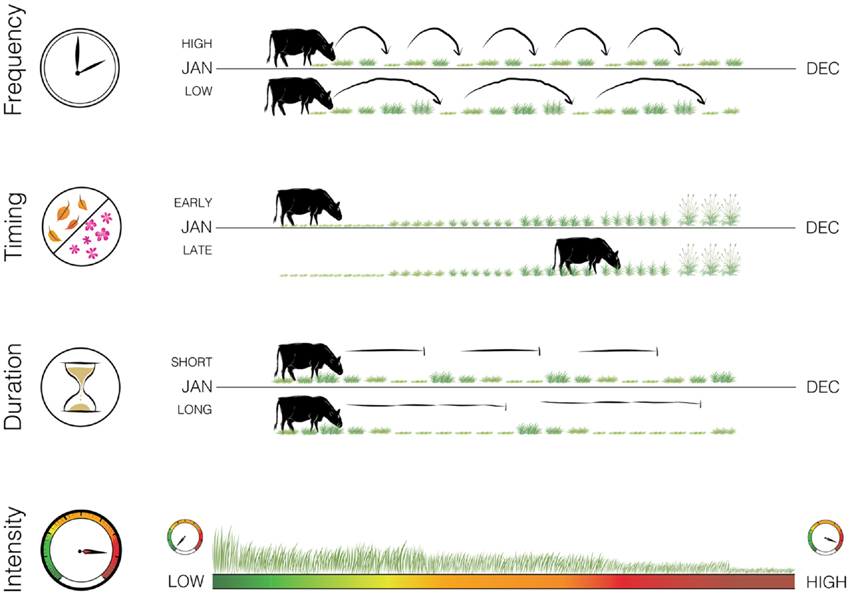A study, by US researchers based at Colarado State University and the University of Florida and published in Global Change Biology, has found that adaptive grazing delivers optimal pathways for soil organic carbon sequestration.
They conclude that “management strategies which adaptively leverage grazing frequency, duration, timing, and intensity will more consistently and reliably create ‘optimal’ grazing patterns necessary for optimising pathways of soil organic carbon (SOC) sequestration. This work has important utility for those engaged in SOC on grazinglands at all levels, including researchers, producers, agencies, and policy makers.”
The study was led by Paige L. Stanley, one of the world’s best known soil carbon researchers, with a team that included Chris Wilson, Erica Patterson, Megan Machmuller and M. Francesca Cotrufo. Stanley said on X, “I think this is my favorite paper I’ve ever written.”
In setting out the purpose behind the research the authors said, “Among options for atmospheric CO2 removal, sequestering soil organic carbon via improved grazing management is a rare opportunity because it is scalable across millions of globally grazed acres, low cost, and has high technical potential.”
However, they noted that, “Decades of scientific research on grazing and SOC has failed to form a cohesive understanding of how grazing management affects SOC stocks and their distribution between particulate (POM) and mineral-associated organic matter (MAOM) – characterised by different formation and stabilisation pathways—across different climatic contexts.
“As we increasingly look to grazing management for SOC sequestration on grazinglands to bolster our climate change mitigation efforts, we need a clear and collective understanding of grazing management’s impact on pathways of SOC change to inform on-the-ground management decisions.”
In the paper, the authors “set out to review the effects of grazing management on soil organic carbon through a unified plant and soil framework, where elements such as productivity, input quality, soil mineral capacity, and climate variables such as aridity co-govern SOC accumulation and distribution into POM and MAOM.”
![The conceptual illustration, above, taken from the paper, shows "how grazing patterns (x, y, z) affect ecosystem function (a) and structure (b) by modulating plant ecophysiological elements [EE; (c)], which together give rise to soil biogeochemical outcomes (d) in terms of total soil organic carbon stock and distribution into particulate (POM) and mineral associated organic matter (MAOM). "Each of the three grazing patterns - (x) undergrazing, (y) optimal grazing, and (z) overgrazing—is expected to result in different ecosystem, ecophysiological, and soil biogeochemical outcomes. EEs (c) are expressed either as continuous gradients or as ratios of two components, where the colour gradient from left to right represents low–high or left:right, respectively, and the placement of black markers represent the expected outcome from each grazing pattern.](https://8point9.com/wp-content/uploads/2024/03/Stanley-1.jpg)
The researchers said that, “In an effort to unify understanding, drive improved research to generate more reliable data, and make consensus possible, we present a conceptual, mechanistic framework of grazing and pathways of SOC response. Our framework explicitly incorporates both plant and soil processes, and a more robust ecosystem function of grazing pattern. We propose mechanisms by which grazing impacts ecophysiological elements (EEs) and pathways of SOC formation and stabilisation which are generalisable across the range of climates and ecotypes characteristic of grazinglands globally.”
The conceptual illustration, above, taken from the paper, shows “how grazing patterns (x, y, z) affect ecosystem function (a) and structure (b) by modulating plant ecophysiological elements [EE; (c)], which together give rise to soil biogeochemical outcomes (d) in terms of total soil organic carbon stock and distribution into particulate (POM) and mineral associated organic matter (MAOM).
“Each of the three grazing patterns – (x) undergrazing, (y) optimal grazing, and (z) overgrazing—is expected to result in different ecosystem, ecophysiological, and soil biogeochemical outcomes. EEs (c) are expressed either as continuous gradients or as ratios of two components, where the colour gradient from left to right represents low–high or left:right, respectively, and the placement of black markers represent the expected outcome from each grazing pattern.”
The illustration below, also taken from the paper, shows “representations of the four metrics contributing to overall grazing pattern: frequency, timing, duration, and intensity. Frequency, timing, and duration are shown along a calendar year timeline with comparative examples of how they differ under ‘high’ and ‘low’ scenarios. We represent intensity as the amount of biomass utilised from grazing over a given time, which is influenced by the former three factors.”
The researchers concluded that, “management strategies which adaptively leverage grazing frequency, duration, timing, and intensity will more consistently and reliably create ‘optimal’ grazing patterns necessary for optimising pathways of SOC sequestration.”

